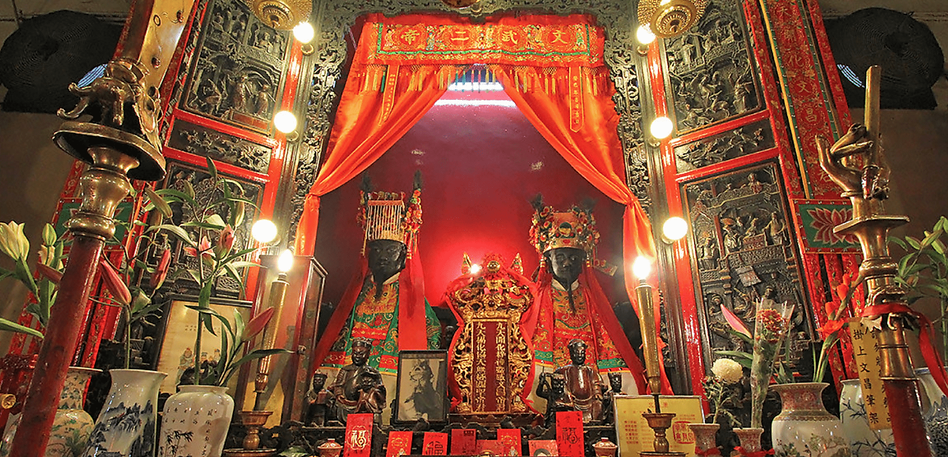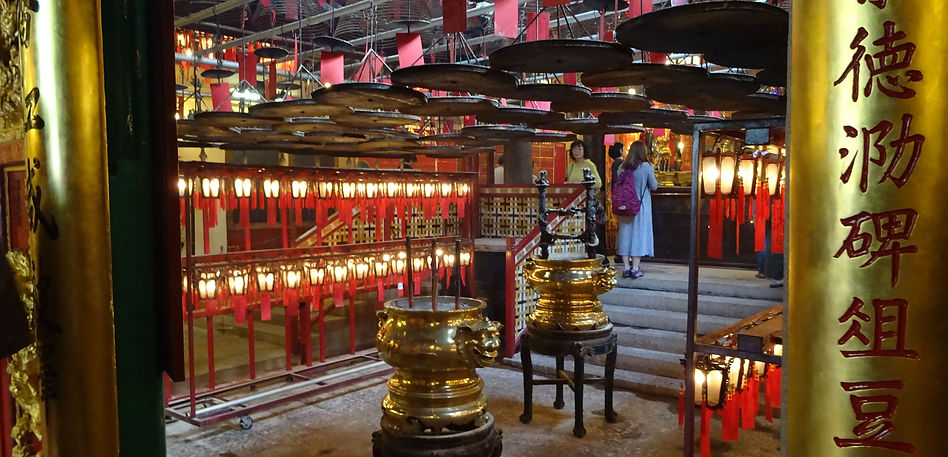Man Mo Temple
Outside the main entrance are four gilt plaques on poles that used to be carried around at processions.
Two describe the gods being worshiped inside, one requests silence and a show of respect within the temple’s grounds, and the last warns menstruating women to keep out of the main hall.

There is an array of altars and god images, the many offerings from worshipers, statues of deities and lucky animals, and lots of red and gold, the Chinese lucky colors for good fortune and happiness.
 |  |
|---|---|
 |  |

Inside the temple are two 19th-century sedan chairs with elaborate carvings, that used to carry the two gods during festivals through the streets of Hong Kong.

The central area was once a courtyard open to the air, with covered galleries on either side. It is now roofed over, but there is a lot of glass in the roof to provide light. This area is where most of the incense burning takes place - the hanging incense cones, and there are big metal 'censers' filled with sand into which you can put incense sticks. There are also stands on either side holding visitors' prayers written on red cards.

Lending the temple its beguiling and smoky air are rows of large earth-colored spirals suspended from the roof, like strange fungi in an upside-down garden. These are incense coils burned as offerings by worshipers.

Closest to the door is the entrance area, with a few small shrines and a 'divine' bell and drum.
This section is separated from the next by a line of columns and in the center a pair of brightly painted, carved wooden doors.
These are purely ceremonial as you can walk on either side of them.

In this higher area are the altars to the gods.
In the middle is the altar of Man Cheong dressed in red and carrying a calligraphic brush, and Mo Tai, dressed in green and carrying a sword.
There are also smaller altars on either side to other gods (Pau Kung, god of justice, and Shing Wong, the City God). In front of the statues are tables for fruit offerings and for more incense sticks.